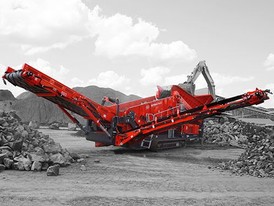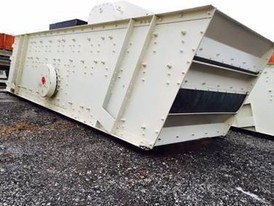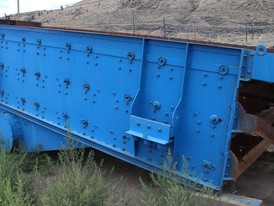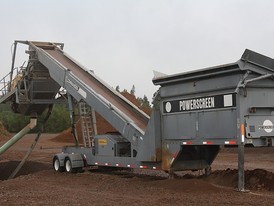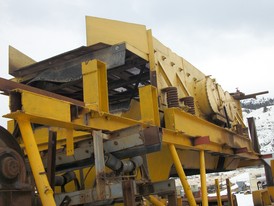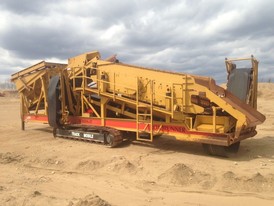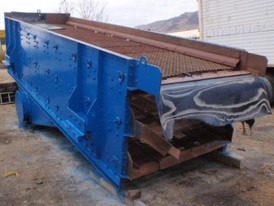Explaining Industrial Screen Decks for Aggregate - Mineral Sorting Equipment
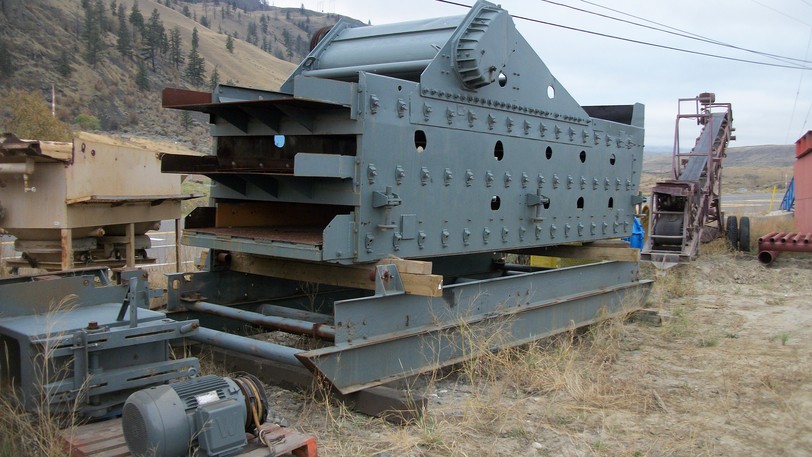
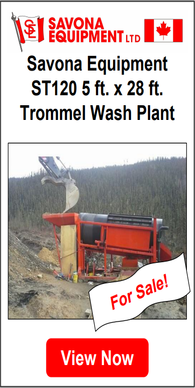

What is a Screen Deck?
Mechanical screening is an important procedure in the processing of minerals. After being crushed, the mined materials are separated into various grades and sorted by particle size. This process is often done via a screening machine, which consists of a motor to produce vibration, a screen for separating materials, and a deck, which is a frame that transports the vibration from the motor to the screen and holds the motor and screen in place. Screens decks can have multiple screen slots to sort minerals into several different grades. The deck is referred to single deck, double deck, triple deck and so on, depending on the number of screens it can hold. In addition to multiple decks, a there are many types of
mechanical screening equipment including circle-throw vibrating, high frequency vibrating, gyratory, and trommel screens.
What type of mining operations are screen decks used in?
High-frequency vibrating screens have a wide range of applications because they deliver high purity and precise sizing. Many companies that are in the business of recovering iron, tin, tungsten, and tantalum from ferrous ore or lead, zinc, gold, silver, and industrial sand from non-ferrous ore will use screen equipment to classify material before it enters the next stage of processing. If a double deck horizontal screen is being used to recover gold the first deck may be set to remove larger rocks and particles from the ore which will get circulated back to the jaw crusher, or other piece of equipment for crushing, to reduce size further. The second deck would be to remove finer ore that needs to be processed further before the next stage of the processing circuit. Material that is processed through both screens could then be fed into a ball mill.
What Companies manufacture Screen Decks
One of the major producers of screening equipment is Terex. This company’s origins goes back 85 years and has owned over 50 different brands. In the screening division two brands that would be familiar to many, Cedarapids and Simplicity, both fall under the Terex namesake. Each brand is available in modular, portable, and static type. Screen decks are also a major component in many of the portable screens and wash plants that are produced by Terex. Many companies also sell used or reconditioned screens that have been manufactured by Hewitt Robin, Universal, Sandvik, etc.
Is There Different Equipment Connected to Vibrating Screens?
In most applications there will be other equipment attached to screen decks or part of the processing system. When analyzing the composition of the 2015 Terex Finlay 863 Mobile Screen Plant this unit is powered by a Deutz diesel engine and has a feed hopper mounted to the plant. The double deck screen is fed by a 39 inch belt feeder and large material discharged by a 39 inch (1000mm) oversize conveyor. The second size is discharged by a second conveyor. Fines are discharged by a third transfer/collection conveyor. This type of screening plant would be found in use at many quarries around North America.
How do screen decks range in size and capacity?
With all the different applications screens are used in, size has to be matched with expected production rates. This could range from screening 100 lbs./hour to hundreds of tons per hour. In a report provided by Larry Olsen and Bob Carnes they go through finding a screens capacity. The formula for determining the correct size of screen deck for your application is as follows.
Formula: A = B * S * D * V * H * T * K * Y * P * O * W * F
“A” is the capacity per square ft. of screen area then converted into tons per hour.
B = Basic capacity per square foot in TPH
S = Incline factor
D = Deck Factor
V = Oversize Factor
H = Halfsize factor
T = Slot factor
K = Material condition factor
Y = Spray factor
P = Shape factor
O = Open area factor
W = Weight factor
F = Efficiency factor
Using this formula helps in determining whether material should be processed using a static screen, modular screen, or portable screen. Cederapids builds two deck or triple deck static screens that are from 5 to 8 ft. long and 8 to 20 inches wide.
Simplicity builds a heavy duty CRS618HF portable screen that is mounted on 1 axle and is complete with a specially engineered high frequency screened for fines material.
As with most equipment used for mining and aggregate applications, finding the right information and doing ample research will produce the best results once your equipment is running in the field.



